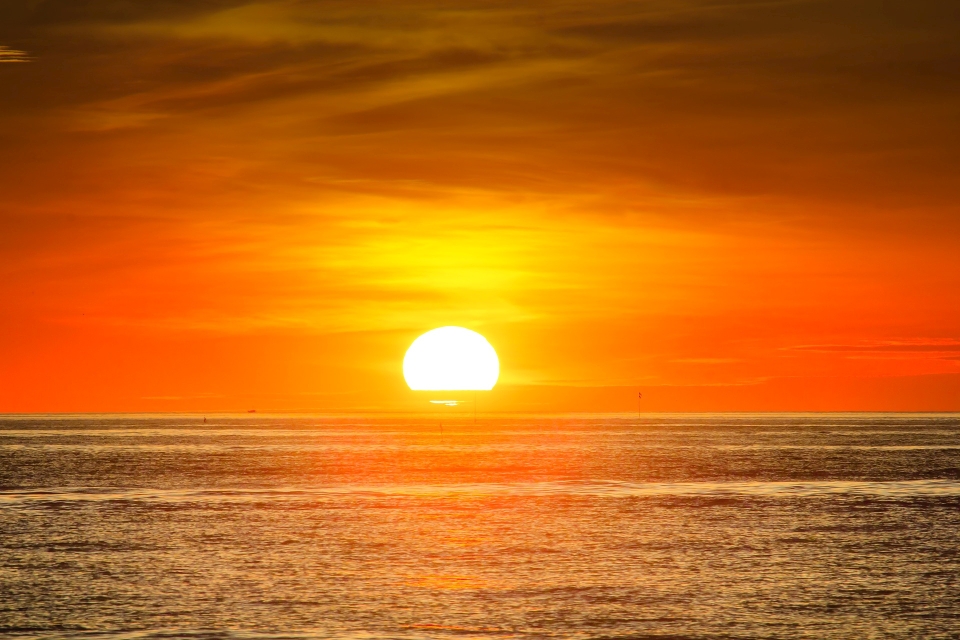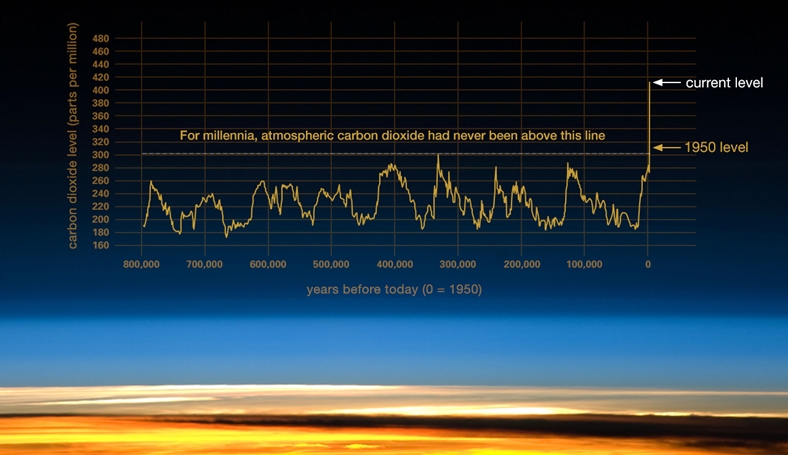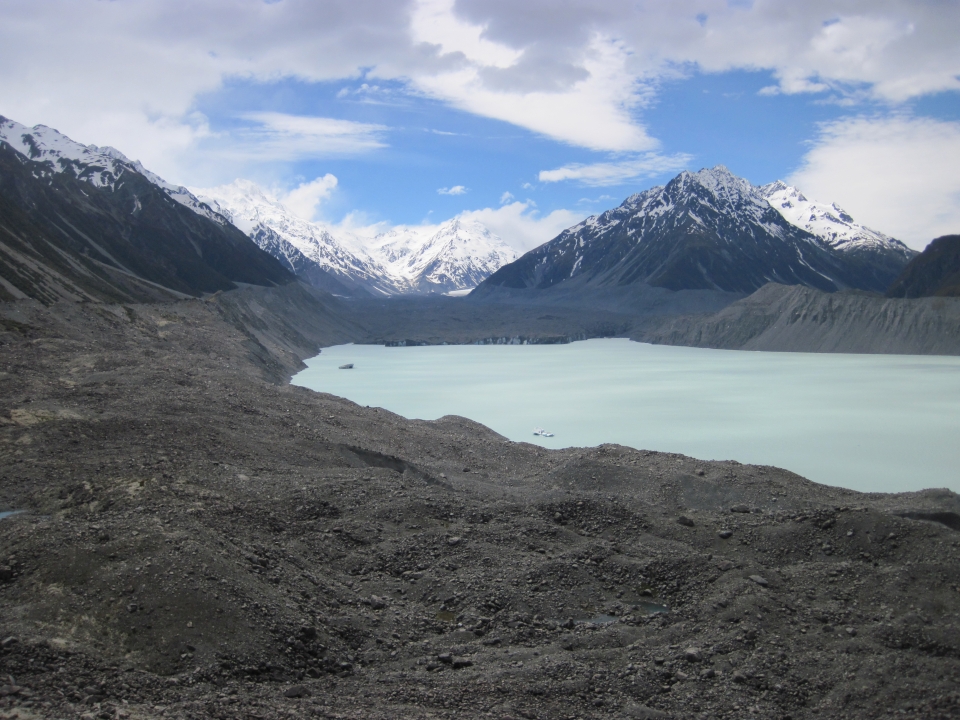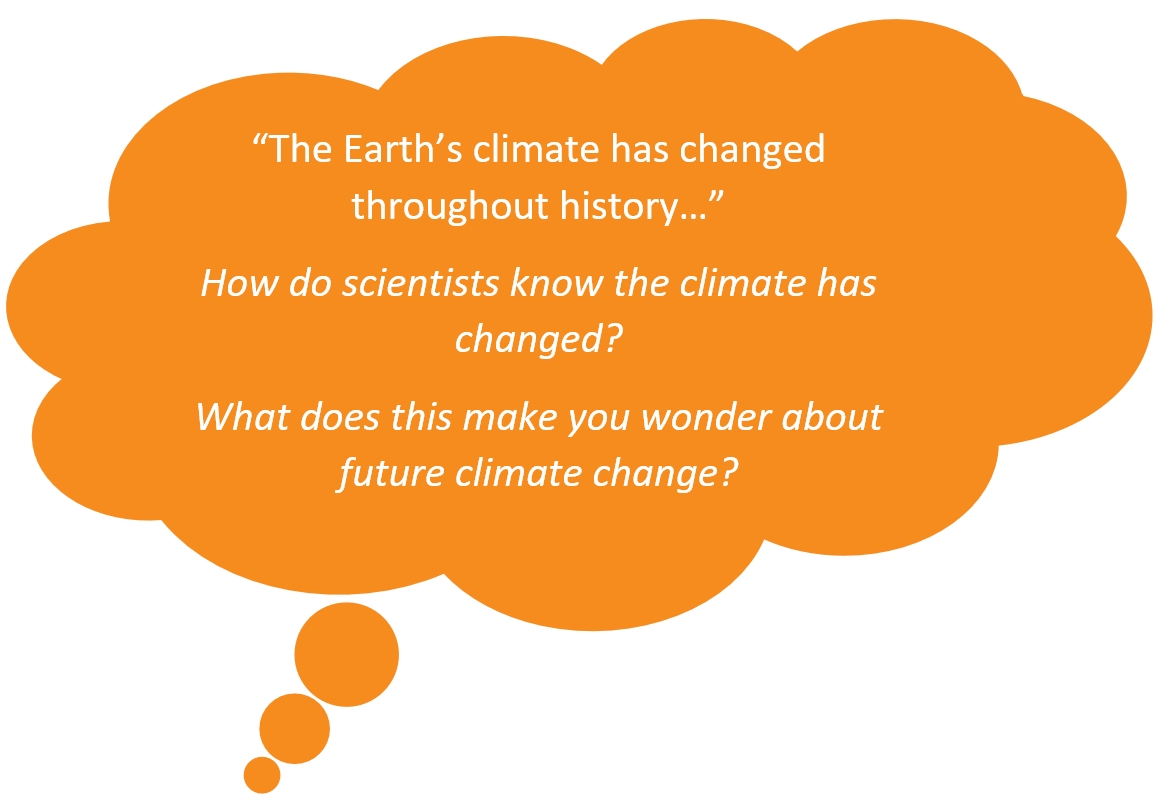You can contact LEARNZ, part of CORE Education, at:
Postal Address:
PO Box 13 678,
Christchurch 8141,
New Zealand

The Earth's climate has changed throughout history. In the last 650,000 years there have been seven cycles of glaciers advancing and retreating. The last ice age ended about 7,000 years ago, which also is about the start of human civilization.
Scientists know this by studying deep ice cores and the types of pollen from deep lakebed mud. Most of these climate changes are caused by very small variations in Earth’s orbit that change the amount of solar energy our planet receives from the sun.
The measurement used to measure climate data like carbon dioxide is in "parts per million".

In the graph you can see how levels of carbon dioxide gas have changed over a very long time. These levels dropped during ice ages. You can see on the right side, where CO2 levels were in 1950, 70 years ago. Today in 2022, the levels of carbon dioxide in our atmosphere are over 415 parts per million.
Ice cores taken from Greenland, Antarctica, and tropical mountain glaciers show that the Earth’s climate responds to changes in greenhouse gas levels.
Scientists monitor the Earth’s climate in many ways. The evidence they have gathered shows that climate change is happening.
The planet's average surface temperature has risen about 0.9 degrees Celsius since the late 1800s, a change driven largely by increased carbon dioxide and other human-made emissions into the atmosphere.
Most of the warming occurred in the past 35 years, with the six warmest years on record taking place since 2010.
The oceans have absorbed much of this increased heat, with the top 700 meters of ocean showing warming of more than 0.2 degrees Celsius since 1969.
The Greenland and Antarctic ice sheets have decreased in mass. NASA data shows Greenland lost on average 286 billion tons of ice per year between 1993 and 2016. Antarctica lost about 127 billion tons of ice per year during the same time period. The rate of Antarctica ice mass loss has tripled in the last decade.
Glaciers are retreating almost everywhere around the world — including in Kā Tiritiri o te Moana the Southern Alps, Himalayas, Andes, Rockies, Alaska, and Africa.

Satellite observations reveal that the amount of spring snow cover in the Northern Hemisphere has decreased over the past five decades and that the snow is melting earlier.
Global sea level rose about 20 cm in the last 100 years. Precise data gathered from satellite radar measurements show a rise of 7.5 cm from 1993 to 2017, which is a trend of about 30 cm per century.
Both the extent and thickness of Arctic Sea ice has declined rapidly over the last several decades.
The number of record high temperature events has been increasing, while the number of record low temperature events has been decreasing, since 1950. Aotearoa has also had more intense rainfall events.
 Ocean acidification
Ocean acidificationSince the beginning of the industrial revolution, the acidity of surface ocean waters has increased by about 30 percent. This increase is the result of humans emitting more carbon dioxide into the atmosphere and therefore the oceans are absorbing more.
See the impact of Climate Change In this Google Earth Tour, you'll see a series of locations around the world already showing visible signs of climate change.
Complete the Climate Change Science quiz
> Discover more about climate change